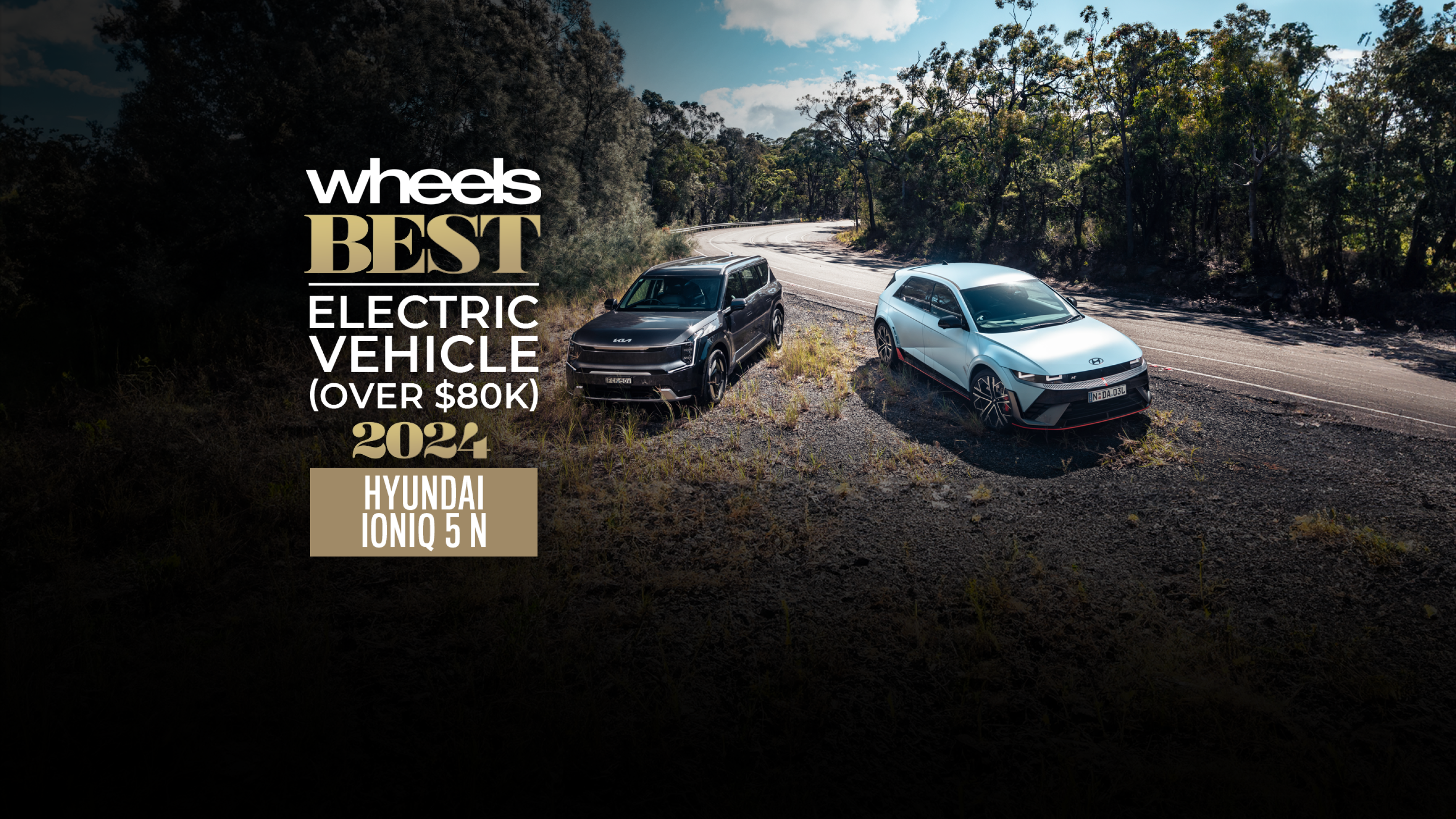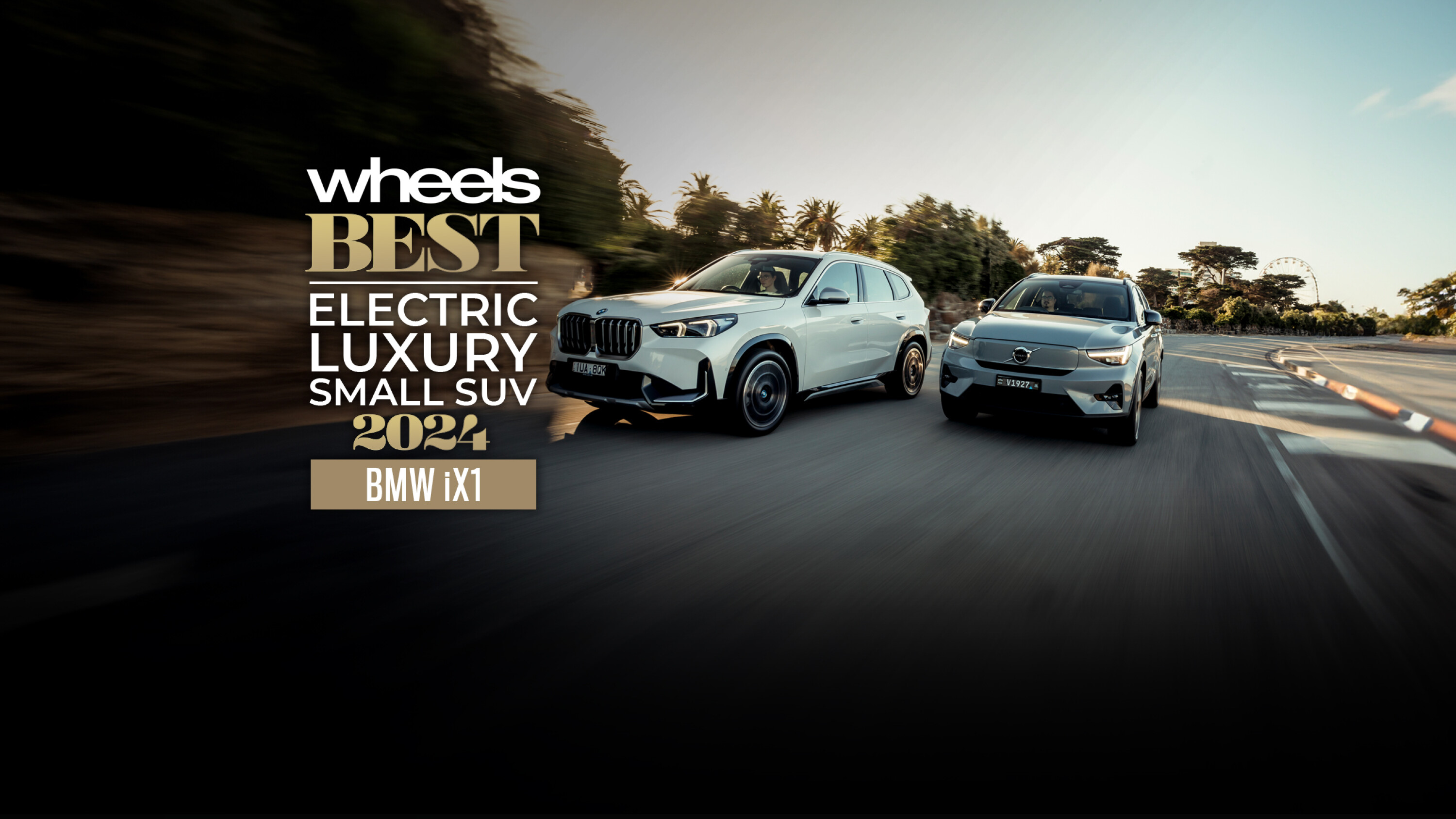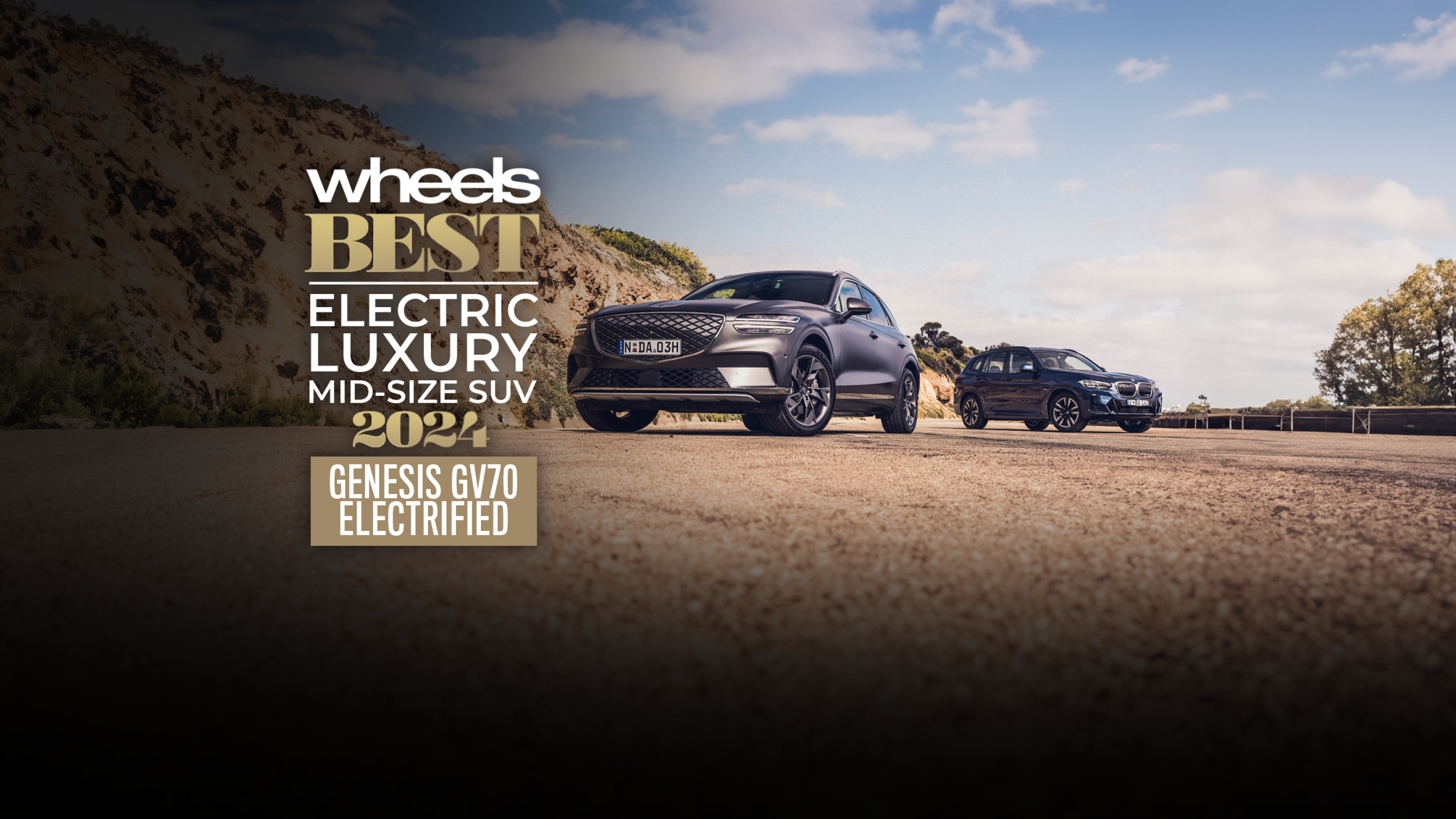
Electricity and limousines are a match made in a bridal suite in a ludicrously expensive hotel.
More than any other vehicle type, they’re truly meant for each other – a union built on silence, torque and enough real estate to comfortably accommodate all the complexities that make a great electric limousine an almost blissful experience.
In saying that, the $100K-plus luxury car I’m referring to here is the BMW i7 – the fully electric version of the seventh generation (G70) 7 Series. As the first forward-thinking 7 Series design since Chris Bangle’s controversial E65 of 2001, it’s appropriate that Munich’s statement sedan happens to herald the debut of the limelight-stealing electric i7, and not just because it looks so damn imposing.
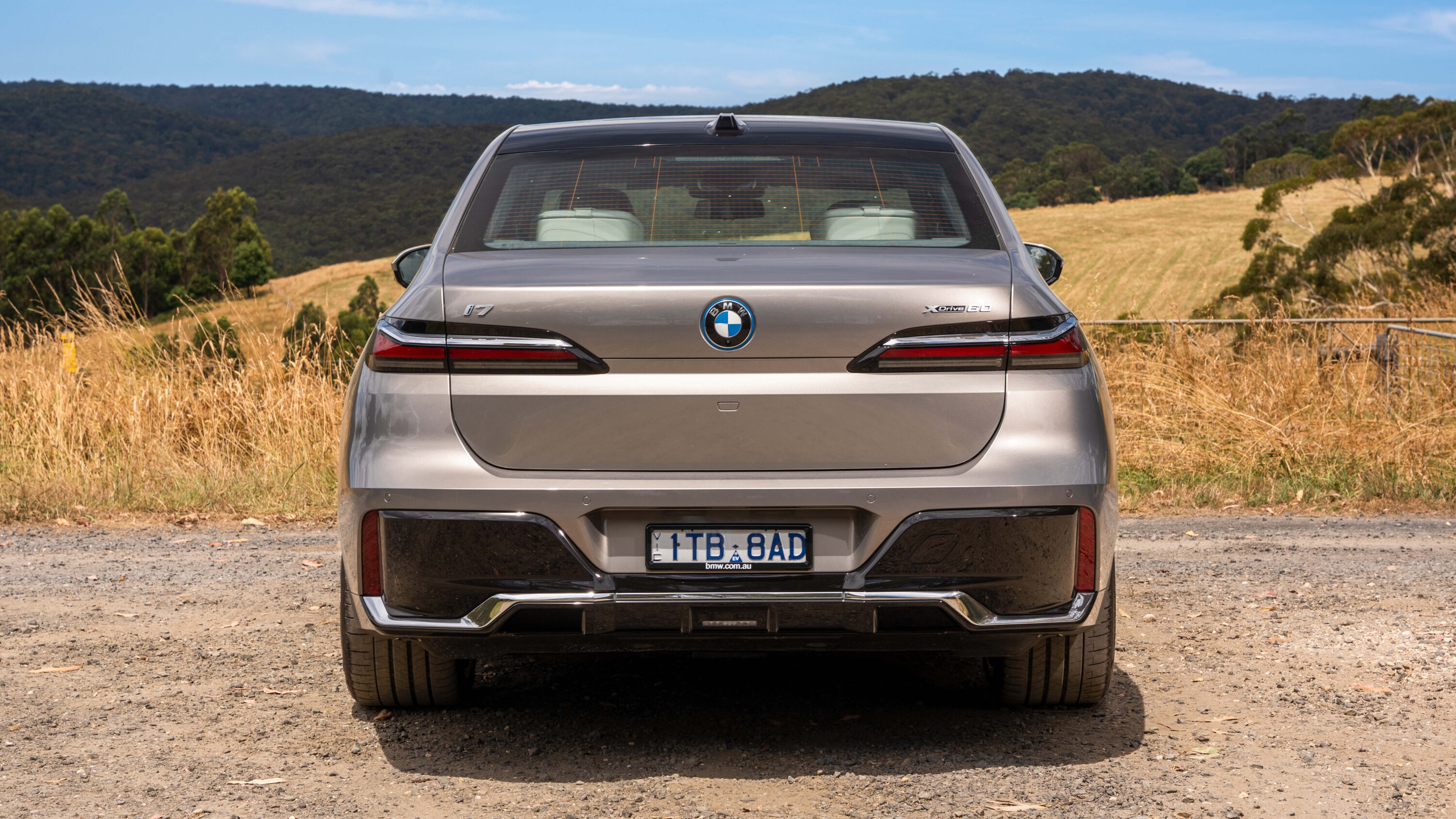
It’s fascinating to comprehend the disparate approaches taken by BMW and arch-rival Mercedes-Benz.
BMW decided to build one enormous sedan for all markets, riding on an even longer wheelbase than the previous L version, with all powertrains packaged into the same muscularly proportioned shape, swathed in intriguing design details.
Mercedes-Benz, on the other hand, went for an all-new, visually unrelated car to the elegant W223 S-Class with its EQS electric sedan. Where the petrol-powered G70 740i and W223 S450 L are clearly direct rivals, that distinction isn’t so clear-cut with the i7 ($307-$345K) and EQS ($220-$327K).
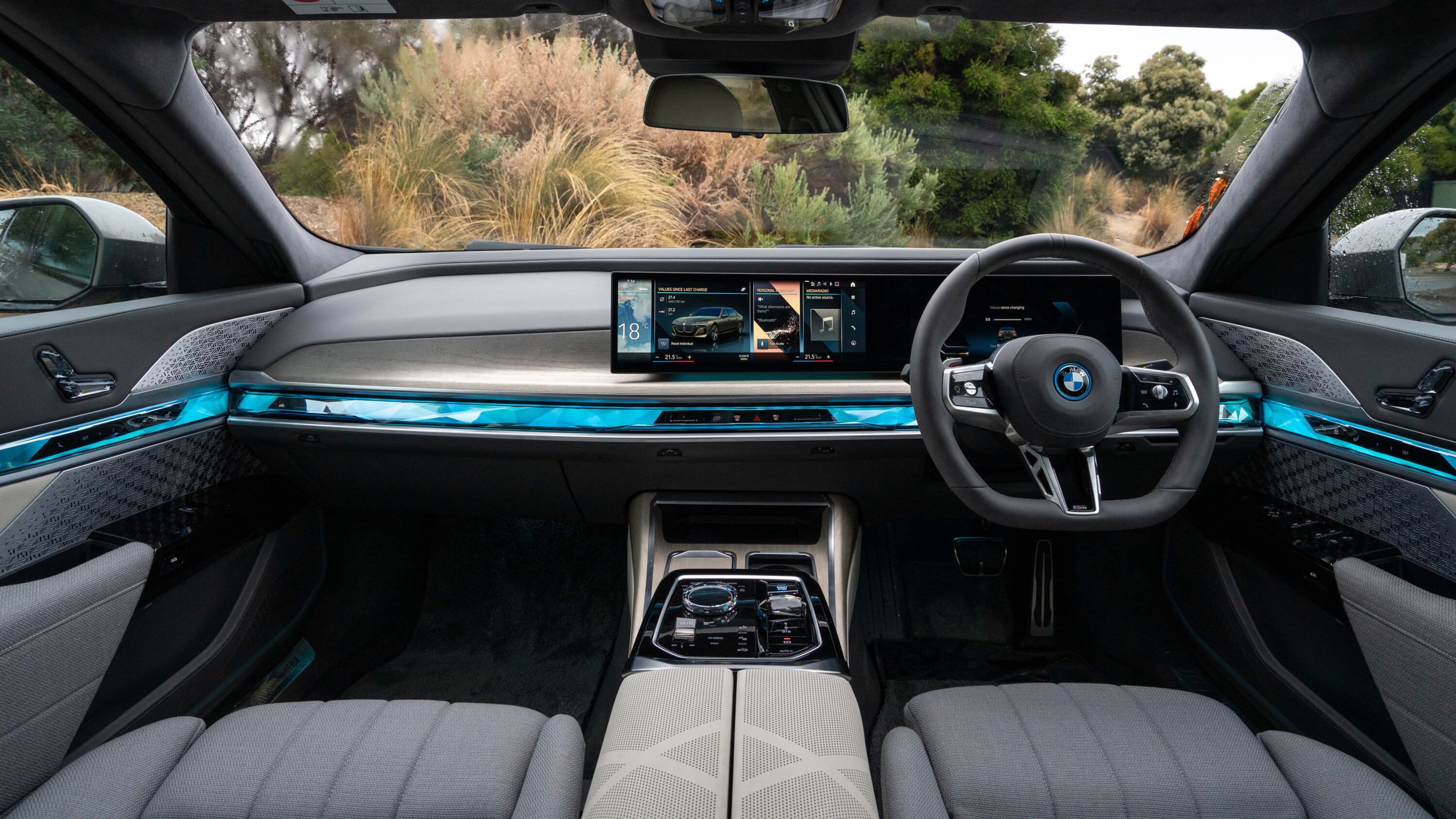
Both share a similar wheelbase length and both weigh about the same (2640kg), but the EQS is 175mm shorter and its technical, could-be-an-EQE design lacks the cut-through of the i7’s almost brutalist interpretation of luxury futurism.
The 5.4m-long i7 is a limousine that begs for attention, particularly in stunning two-tone paint. And it maintains that allure inside with almost youthful flair – embracing technology with a degree of whimsy that so often eludes ‘serious’ cars like this.
The G70 7 Series doesn’t exude the timeless elegance and refined taste of a W223 S-Class, but that freedom from conservatism gives the 7 Series scope to push a few boundaries and be a bit brash, yet with just enough visual restraint to keep it tasteful.
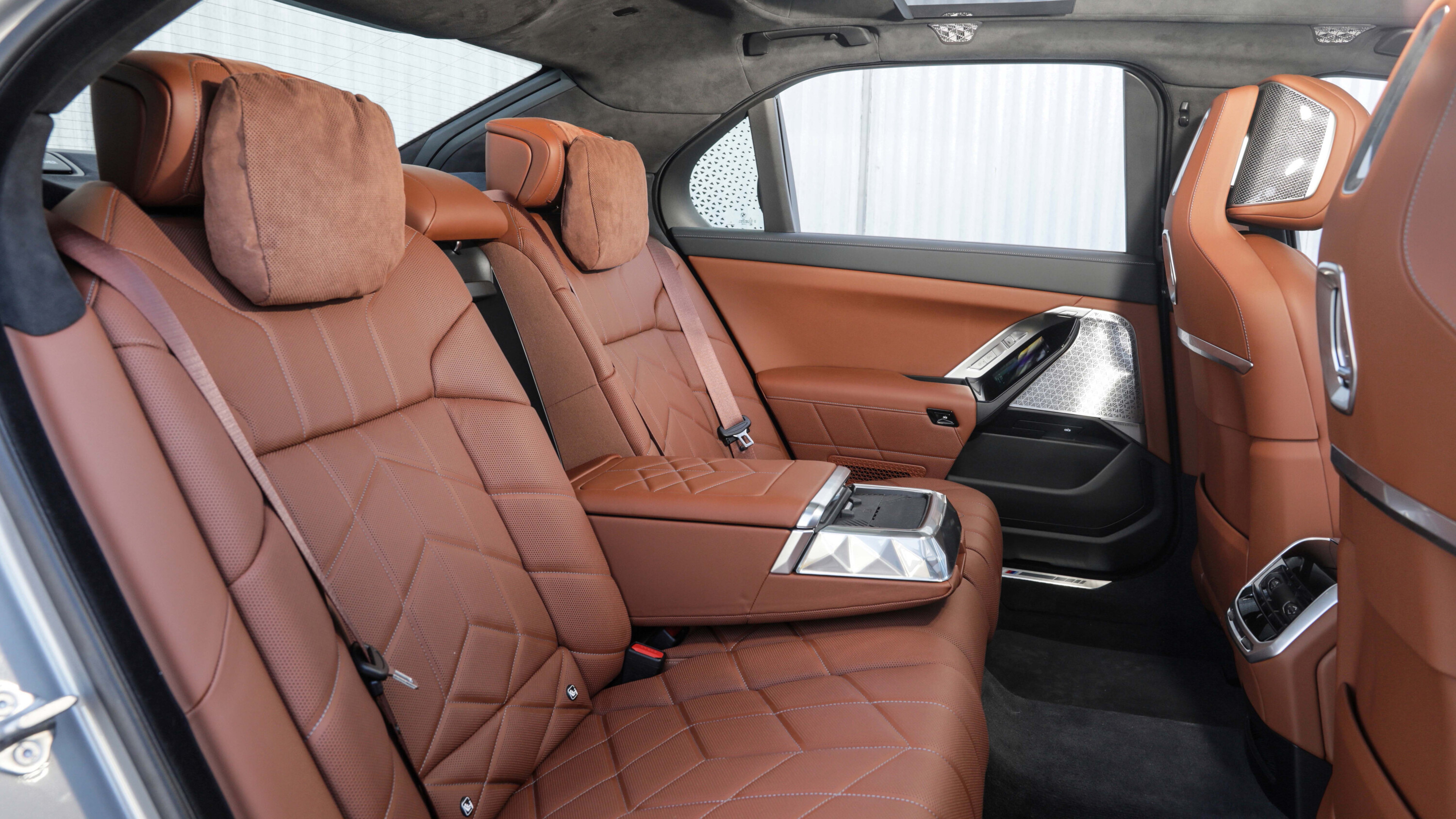
BMW’s striking four-door introduces a degree of SUV elevation to the traditional limousine
With its raised roofline and doors that open to almost 90 degrees – automatically, in six different ways, in the i7 – BMW’s striking four-door introduces a degree of SUV elevation to the traditional limousine, almost like a nod to Rolls-Royce. And inside its screen-dominated cabin, anyone familiar with the boring predictability of the previous generation will be blown away by the i7’s combination of technical prowess and design warmth.
An enormous curved screen spans more than half the dashboard – a 12.3-inch instrument display and a 14.9-inch centre display – yet there are so many other interesting aspects to the i7’s interior design that its screens simply disappear into normalcy.
Classicists might need to dial down the ambient-lighting and upholstery colours, yet the i7 somehow stops short of appearing completely garish, despite its focus on sparkly detailing and wonderful clashing patterns.

Seat comfort is outstanding, as is rear legroom, in this almost Baroque cabin, with the thatched seat upholstery – a stunning combination of soft leather and cashmere wool – adding textural warmth to the i7’s unashamedly high-tech cabin.
The 35-speaker Bowers & Wilkins stereo, combined with a 31.3-inch drop-down rear theatre screen, is so extreme in its opulence, it’s laugh-out-loud magnificent.
Of the two powertrains offered in Australia, the electric i7 is clearly the limelight-stealer. Combining a 106kWh battery with front and rear electric motors in the xDrive 60 for a total of 400kW and 745Nm – enough for 0-100km/h in 4.7sec and up to 625km of WLTP range – the i7’s silken smoothness, instant throttle response and unrelenting accelerative thrust are borderline addictive.
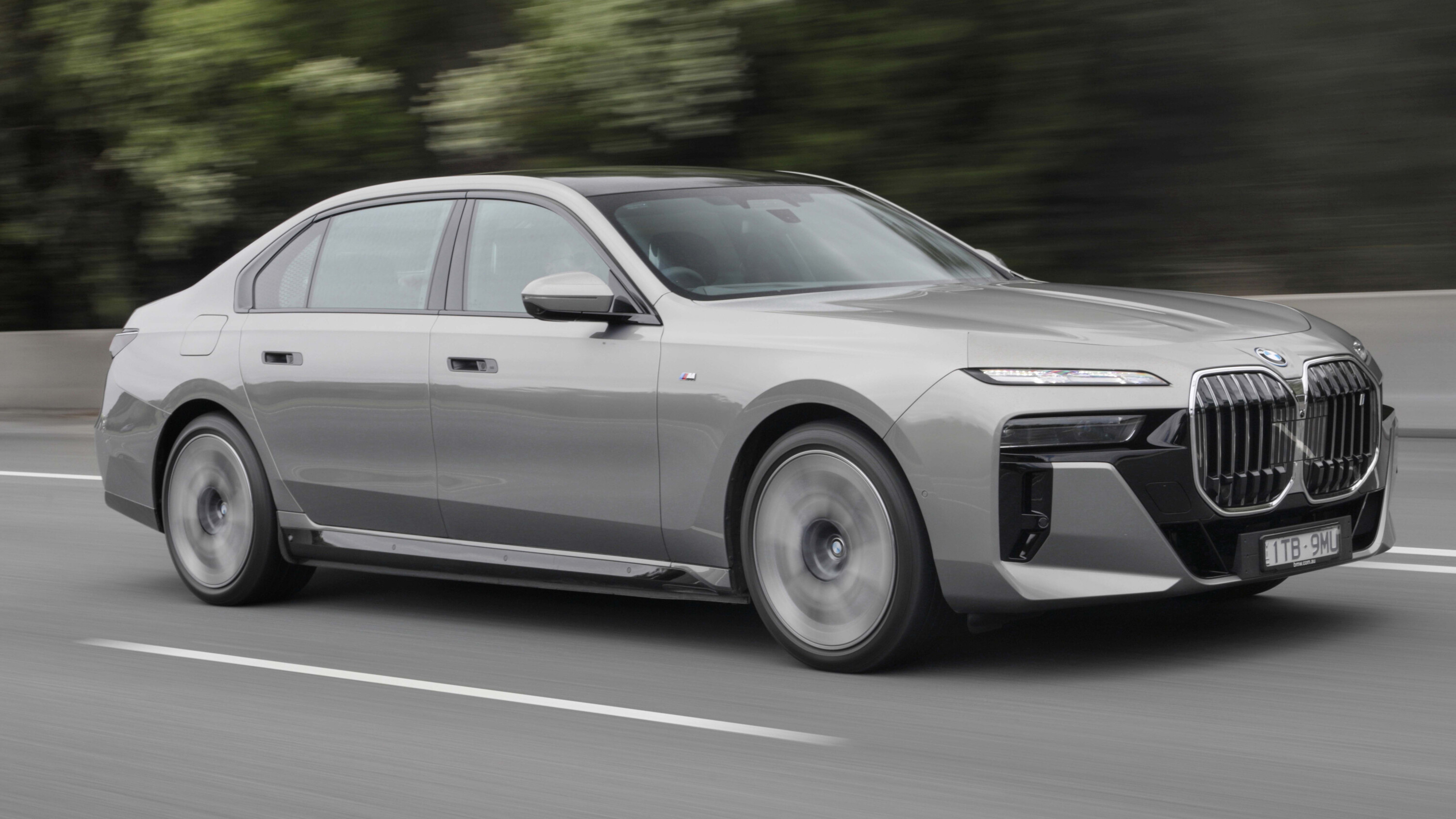
It manages to make the combustion-engined 740i feel grainy and lethargic.
And we haven’t even mentioned the silent-assassin M70 version, which amps the i7’s outputs to 485kW and 1100Nm, and drops its 0-100km/h time to 3.7sec, while only reducing WLTP range to 560km. Both i7s can go from 10-80 percent charge in around 28 minutes.
Sealing the deal in this superb luxury express is the way it drives. With its low-mounted powertrain, four-wheel steering, adaptive air suspension, active anti-roll and active roll comfort properties, the all-wheel-drive i7 combines chassis poise and corner-exit drive with an outstanding level of ride plushness.
Indeed, given its 2.6-tonne ballast, this huge sedan shrinks around its driver on faster-flowing roads and does a superb job of maintaining its cool, though Sport mode is too firm for Australian roads and not in keeping with the flagship BMW’s station in life. The i7’s steering can also feel a little aloof.
But this cocooned separation from the world outside is what an electric limousine is all about. And for the money – albeit an enormous pile – you get the most interesting, characterful, intriguing and deeply impressive electric sedan out there.
⚡ 2024 Wheels Best EVs
Looking for an EV in a different size or price category? Visit our full Wheels Best EVs series at the links below.
? Wheels Best EVs
- Best Small Electric Car Under $40K
- Best Small Electric Car $40-50K
- Best Small Electric Car $50-60K
- Best Electric Small SUV
- Best Electric Midsize SUV
- Best Electric Midsize Sedan
? OVERALL WINNER: Best Electric Car Under $80K
PART 2
- Best Electric Large SUV
- Best Electric Small Luxury SUV
- Best Electric Midsize Luxury SUV
- Best Electric Luxury Sedan Under $100K
- Best Electric Luxury Sedan Over $100K
- Best Electric Performance Car
? OVERALL WINNER: Best Electric Car Over $80K
We recommend
-
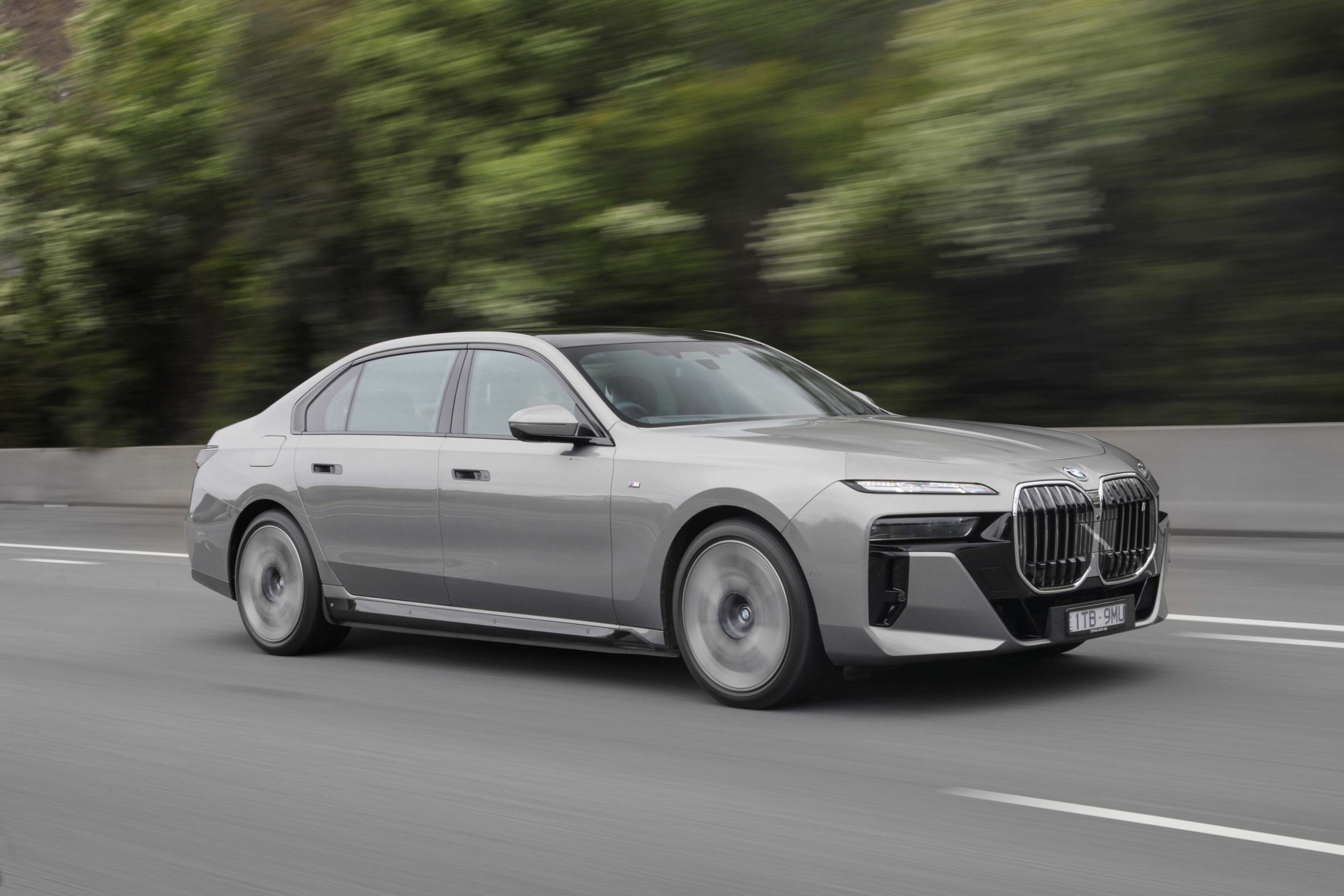 Reviews
Reviews2023 BMW 7 series and i7 launch: First Australian drive
As the first daring BMW limo since the 2001 E65, the seventh-gen 7 Series introduces a new styling direction, sizing rethink and limelight-stealing i7
-
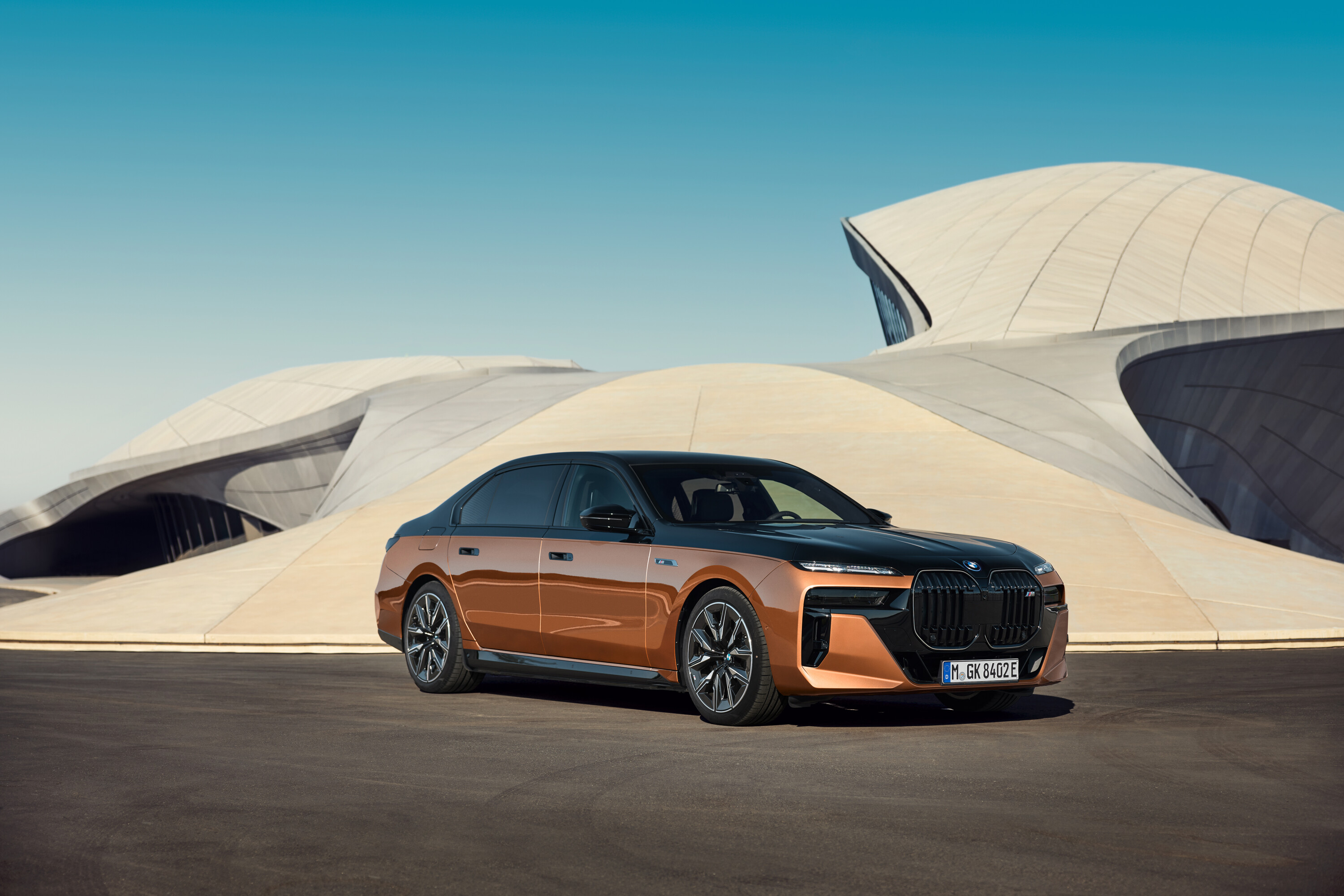 News
News2024 BMW 7 Series and i7 Australian pricing and features
The newest iteration of BMW’s bleeding-edge limousine is here, starting from $268,900
-
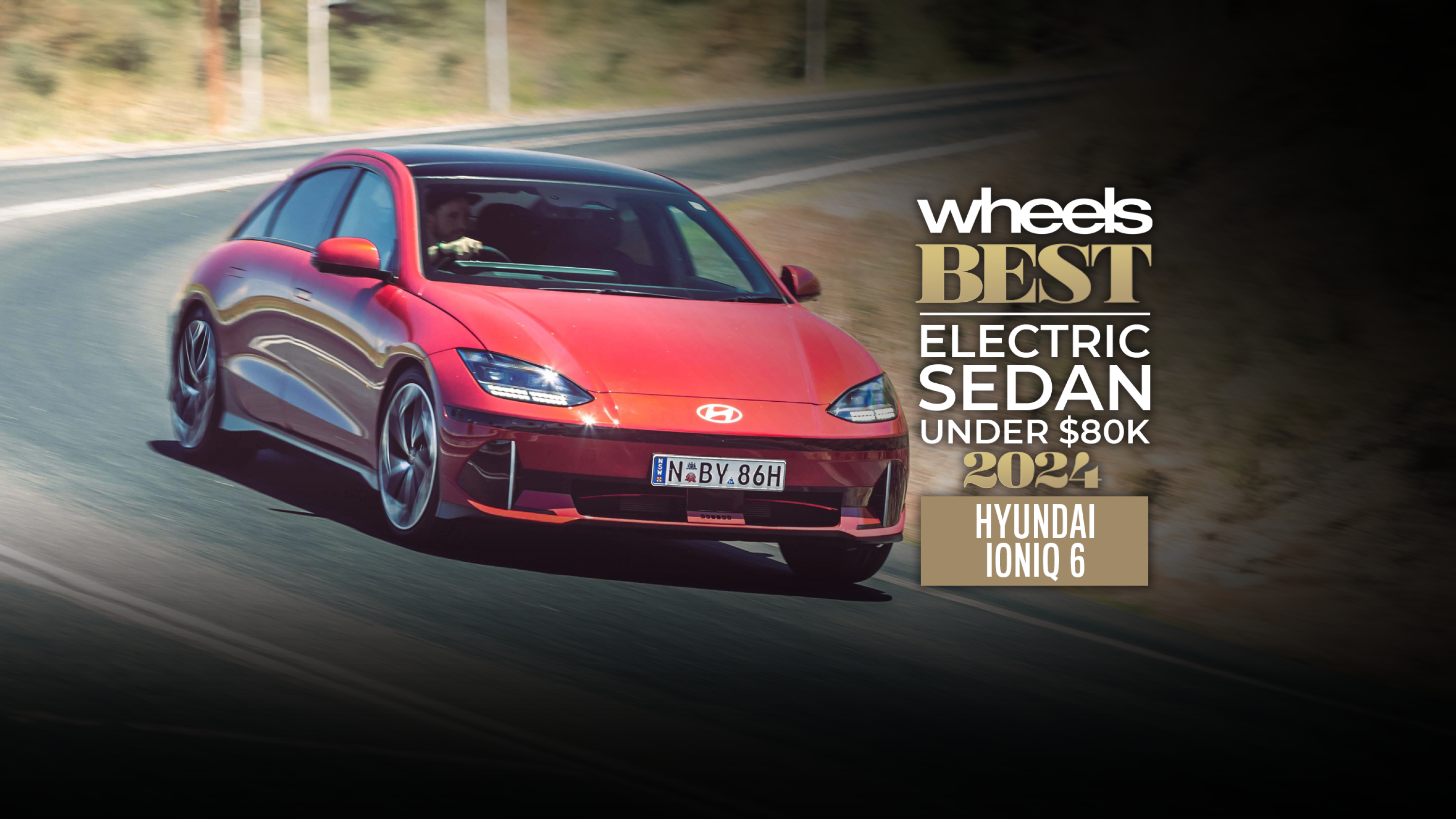 Electric
ElectricBest Electric Sedan Under $80K: Hyundai Ioniq 6
Up to $80K buys you some impressive hardware in the electric sedan category.

